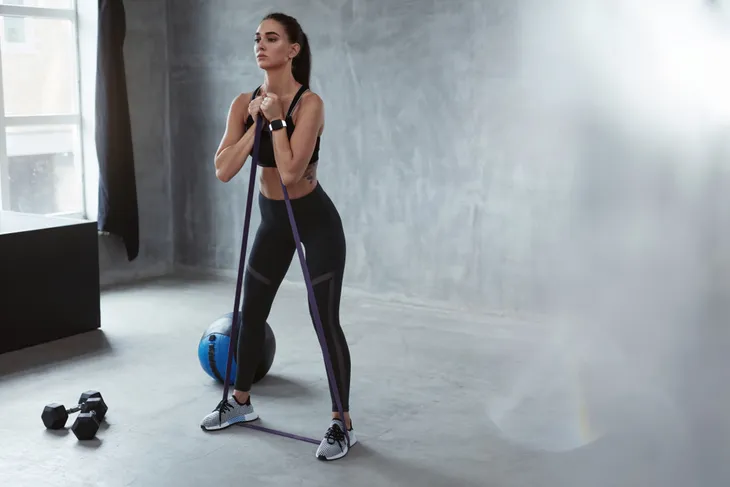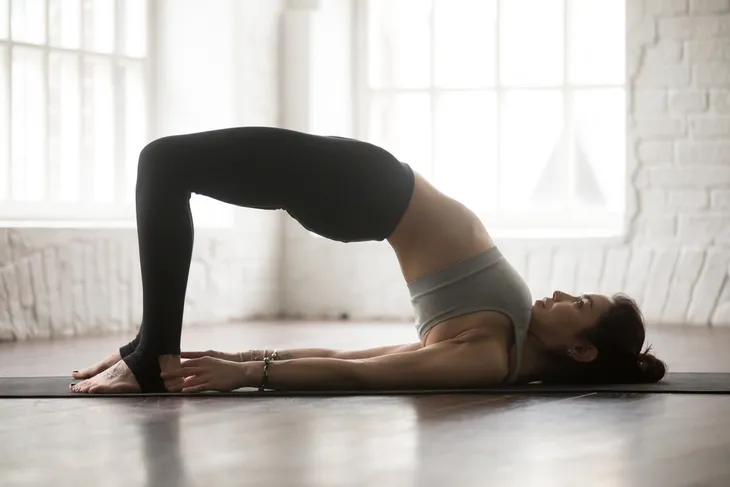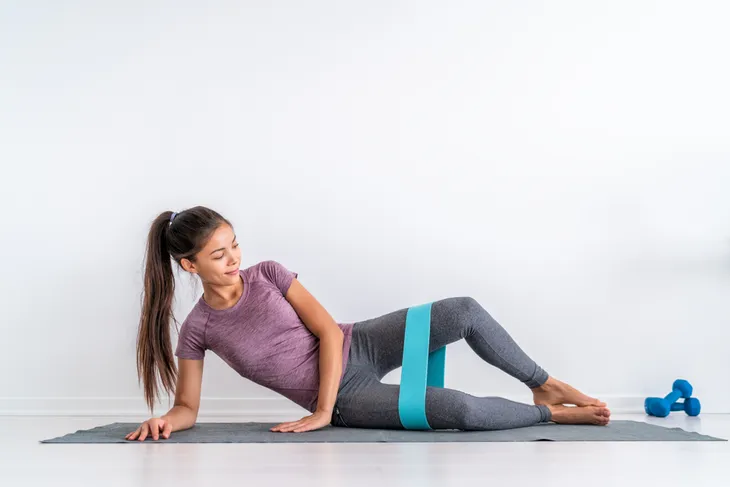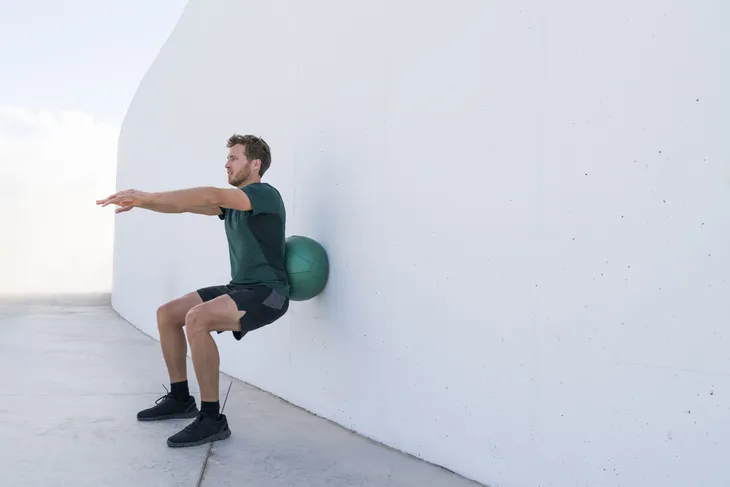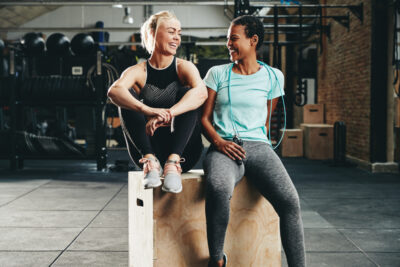If you have knees that are sore from arthritis, injury, or have just always seemed to be prone to aching, you might be afraid to perform knee-dominant strength training exercises. Not only are there exercises you can do that won’t cause additional knee pain, but strengthening the muscles around the knee plays a big role in pain reduction.
The stronger the muscles around the knee, the less strain on the joint itself. Remember, if you have a pre-existing condition that is causing your knee pain, you should check with a medical professional to ensure the following exercises are right for you…
Banded Walks
Banded walks are great for working the glutes, which play a major role in stabilizing the hip, and therefore, the knee. Find a resistance band that is long enough to tie around both ankles in a giant loop. When you are standing with hips shoulder distance apart, there should be slight tension around your ankles. For this exercise, you will want to focus on your lead leg’s knee tracking between your big toe and first toe and squeezing the glute on the lead leg side.
To start the movement, stand hip distance apart with knees slightly bent and bum pushed backwards into a semi-squat position. Step to your right, causing increased tension on the band, and then bring your left leg back to starting position. This is one rep; aim to perform 10- to 15- repetitions in both directions 1 to 2 times for beginners.
Single Leg Hamstring Cable Curl
If exercises like deadlifts put too much strain on your knees, the single leg hamstring cable curl is a great option to work both legs separately, which is important to help reduce left to right imbalances. Grab a comfortable mat and set up in front of a cable machine. Clip an ankle strap to the lowest level attachment and then secure it around your ankle and sit on the ground. Turn onto your stomach into starting position then pull your heel towards your butt, keeping your foot flexed.
As you pull, think about tightening your core and pulling back in a nice, smooth movement (no jerking), squeezing your hamstring and butt before slowly lowering to the starting position. Common mistakes are using momentum to lift the weight and gripping the floor with your upper body (both can mean you are lifting too much weight).
Double Leg Glute Bridge
Dedicated time spent on strengthening your glutes is something most people do not do nearly enough of. Strong glutes improve hip functioning, which in return can reduce stress on the knees. To perform a double leg glute bridge, lay on your back with both knees bent and feet flat on the floor and hands resting beside you. Your spine should be neutral, not flattened into the floor.
Before you begin, do some work to wake up your glutes by squeezing them as hard as you can for several seconds, resting, and repeating. This will help fire up the glutes and not rely on the hamstrings to do most of the work. Once you’re ready to go, squeeze your glutes again then raise your hips off the floor by keeping your feet flat on the floor, but focus on pushing your weight through your heels. Lift until your spine is neutral, not over-extended, and slowly lower back to the floor.
Clamshells
This exercise might not seem like much, but after just a few reps you will start to feel your underworked glutes burning. To set up, lay on your side with your hip and knees stack on top of each other. Bend your hips to approximately a 90-degree angle and let your top arm rest on the floor and your bottom arm support your head (or use a pillow).
To perform the exercise, tighten your core and raise your top knee off of your bottom knee while still keeping your heels touching, lifting until there is roughly 10- to 12-inches between your knees. At the top, think about squeezing your glutes and focusing on the side of the glute on the top leg. Lower your knees back together in a controlled manner. Make sure you don’t arch your back the top of the movement.
Semi Squat Wall Ball Squeezes
Semi squat ball squeezes can help you build up strength in your quads without stressing your knees. Find a ball that is approximately half the size of a soccer ball. It should be firm enough that it gives if you push into it (unlike a medicine ball), but firm enough that squeezing it will be tough for your inner thigh muscles.
Take the ball and place it between your legs, just above your knees. With your back against a wall, slide down until your legs are at a 90-degree angle or less if it bothers your knees. As you lower yourself, squeeze the ball together for 5-seconds to help activate your inner quad muscles. Then return to standing and repeat. Instead of lower and raising yourself, another variation is to just lower and hold the contraction for as long as you can.

